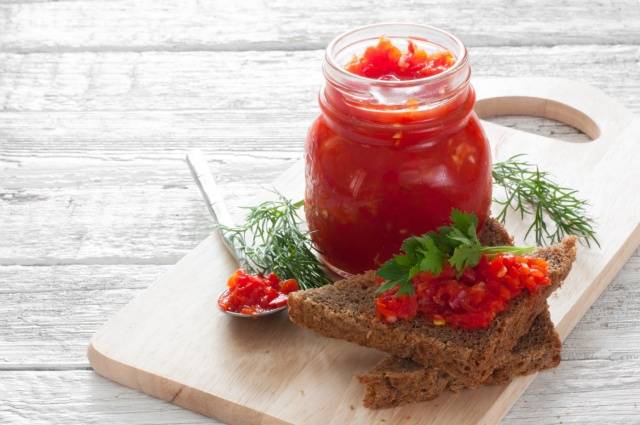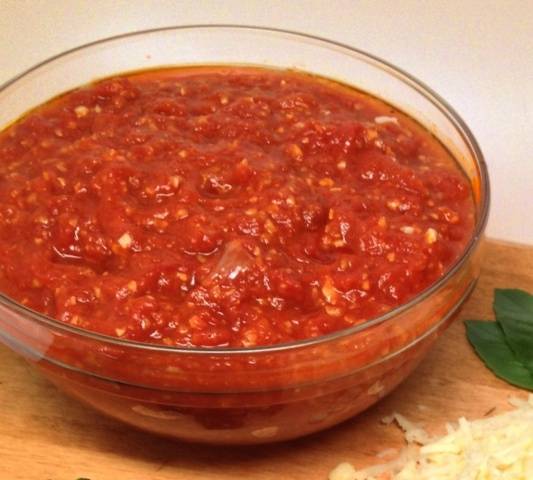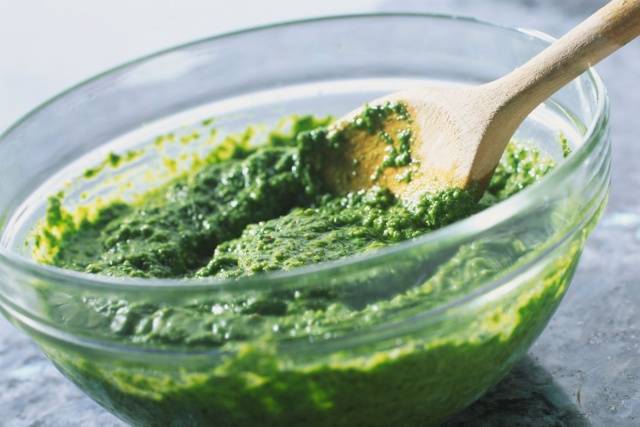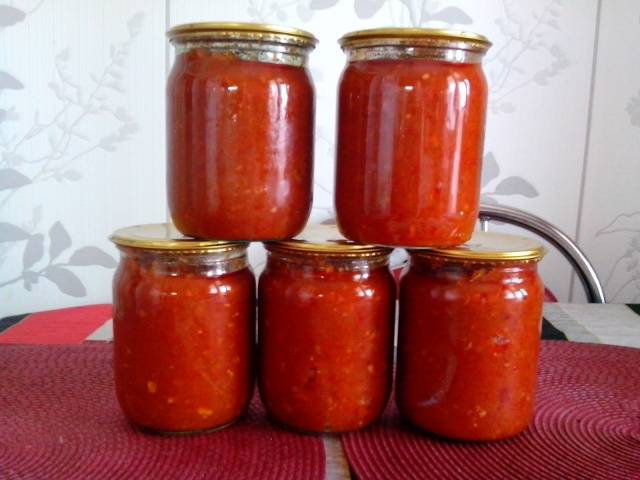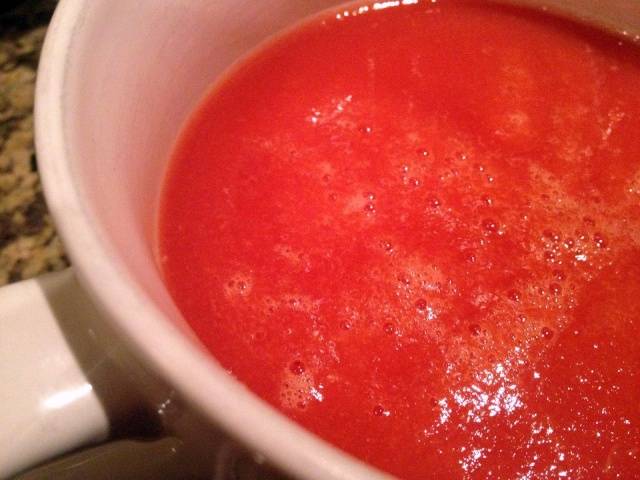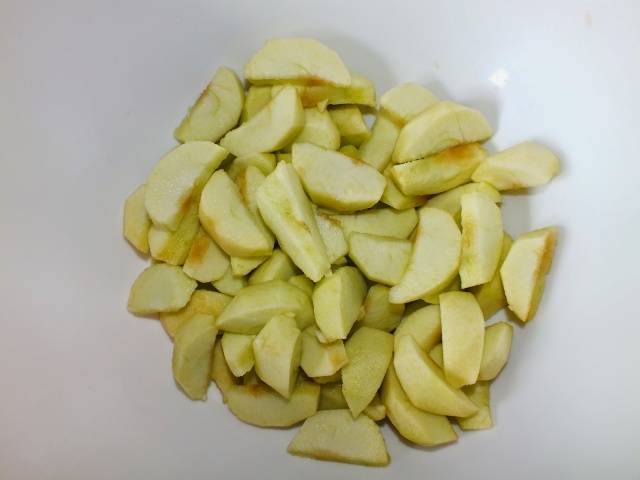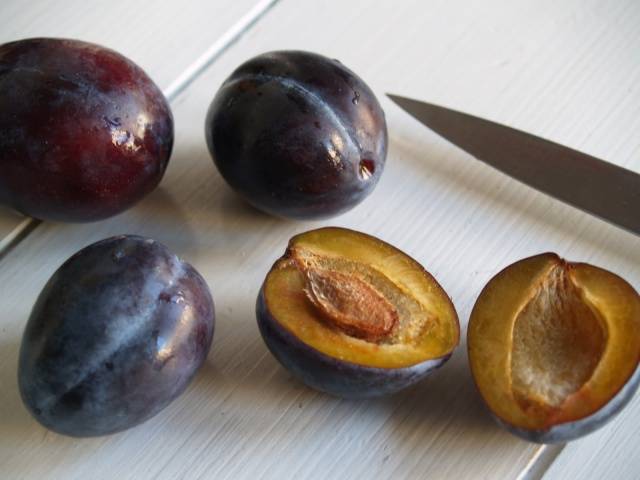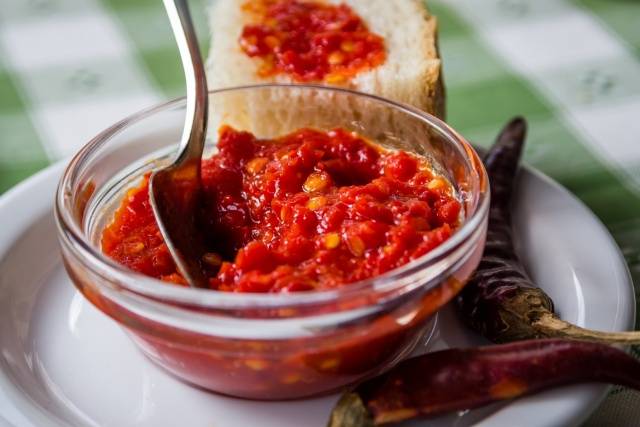Content
Adjika is one of the types of homemade preparations, which is obtained from tomatoes, hot peppers and other components. Traditionally, this sauce is made using bell peppers. However, there are simple recipes to avoid this component. Adjika without pepper for the winter is prepared raw or heat treated.
Cooking rules
You can get delicious homemade products if you follow the following recommendations:
- cooking will require fleshy ripe tomatoes;
- it will not work completely without pepper, since you definitely need to spice it up chilli;
- sugar and salt will help to adjust the taste of the sauce;
- piquant notes will appear in adjika after adding coriander, paprika, hops-suneli and other spices;
- the largest amount of nutrients is stored in the sauce prepared without boiling;
- spicy seasonings are used with caution to avoid stomach problems;
- if you need to get winter preparations, it is recommended to subject the vegetables to heat treatment;
- you can extend the storage time of adjika by adding vinegar.
The easiest recipe
You can get delicious adjika without pepper in accordance with the following simple recipe:
- For cooking, you need 1.2 kg of ripe tomatoes. First, the vegetables must be washed, then cut into pieces and the stalk removed.
- Garlic (1 cup) is peeled.
- The prepared components are passed through a meat grinder.
- Salt is added to the resulting mass (2 tbsp. L.).
- Tomatoes and garlic are left in a container for 2-3 hours. During this time, you need to stir the mass several times to ensure uniform dissolution of the salt.
- During this time, it is necessary to sterilize the jars in which the adjika is placed.
- Banks are closed with lids and left for the winter.
Adjika with horseradish
Adjika is very spicy from a tomato without pepper, to which horseradish root is added. It is prepared by observing the following technology:
- Tomatoes (4 kg) must be cut into pieces and the stalk removed.
- Garlic (2 heads) is peeled.
- Horseradish root is soaked in water for one hour, after which it must be peeled.
- Vegetables must be minced.
- Salt and 9% vinegar (4 tablespoons each) are added to the finished mixture.
- The sauce is rolled up in jars or served to the table. Add sugar if desired.
Adjika from green tomatoes
When using green tomatoes, adjika takes on an unusual color. At the same time, the taste of the dish remains high. Green tomatoes will make the adjika less spicy.
You can prepare such a sauce according to the recipe:
- First, green tomatoes are prepared, which will require one bucket. You can not remove the skin from them, however, it is necessary to cut the stalks. Too large specimens are cut into pieces.
- Prepared tomatoes are passed through a meat grinder.
- Chili pepper (6 pcs.) Will help to add spice to the dish. It is also passed through a meat grinder after the tomatoes. Reduce the amount of pepper if necessary.
- Add one glass of chopped horseradish, salt and olive oil to the resulting mass. The ingredients should be added carefully, constantly controlling the taste of the sauce.
- The finished product is thoroughly mixed and laid out in jars.
Green adjika with cooking
You can get adjika of an unusual green color by boiling tomatoes. For the sauce, only green tomatoes that have not yet begun to ripen are chosen. If the tomato is already turning pink, then it is not used for adjika.
The cooking process of this unusual dish includes several stages:
- The stalk is cut out of tomatoes, after which they are crushed in any way possible.
- Oil (0.5 l) and salt (0.5 cups) are added to the resulting mass.
- The chopped tomatoes are brought to a boil, after which they are left over low heat for 1 hour.
- After a specified period of time, chopped garlic (200 g) and chopped green onions are added. You also need to pour 4 tbsp into the vegetable mass. l. 9% vinegar. For spiciness, you can add a little hot pepper, previously chopped.
- All components are mixed and then boiled for 20 minutes.
- The prepared sauce can be preserved for the winter.
Adjika with walnuts
The addition of walnuts gives the sauce a unique flavor. Such adjika is being prepared subject to the following technology:
- Hot peppers (5 pcs.) You need to rinse well, remove the stalks and seeds.
- Prepared vegetables are ground using a blender or coffee grinder. It is recommended to wear gloves when handling them.
- Walnuts (1 kg) must be thoroughly ground.
- Garlic (4 pcs.) Is peeled and then passed through a garlic press.
- Add the nuts and garlic to the prepared peppers.
- Add coriander seeds, saffron, chopped cilantro, hops-suneli to adjika.
- The mixture is mixed, after which 2 tbsp is added to it. l. wine vinegar.
- Adjika can be laid out in banks. This recipe does not require sterilization. It contains products that act as preservatives.
Burning adjika
A very spicy adjika can be obtained by using paprika and various greens. You can prepare such a sauce by observing the following recipe:
- Hot peppers must be cleaned of seeds and stalks, gloves must first be worn.
- Prepared pepper is rolled through a meat grinder.
- Then greens are prepared: cilantro, dill and parsley (250 g each), which is finely chopped.
- Celery (50 g) is cut separately.
- The head of garlic is peeled and finely chopped.
- Prepared herbs and garlic are added to a container with pepper.
- The resulting mixture is stirred, add 1 tsp. coriander.
- The finished adjika is placed in jars and stored away.
Adjika marrow
Delicious adjika is made from zucchini and tomato paste:
- Zucchini (2 pcs.) Peel and seed. If you are using young vegetables, you can immediately cut them into large pieces. Then zucchini is passed through a meat grinder or chopped in a blender.
- Tomato paste (200 g), vegetable oil (1 cup), salt (100 g), hot pepper (3 tsp) are added to the zucchini prepared in this way.
- The vegetable mixture is left to stew for 1.5 hours.
- Separately chop the garlic (2 heads) and chop the parsley (1 bunch).
- Rub the horseradish root (200 g) on a grater.
- After 1.5 hours, add garlic, parsley and horseradish to the vegetables. Then pour 4-5 tablespoons of vinegar diluted with water into a container.
- The vegetables are stewed for another 10 minutes, after which they are brought to a boil.
- The sauce is ready for canning.
Adjika from zucchini in a slow cooker
Delicious zucchini adjika can be obtained from tomatoes and zucchini. To prepare it, you need to follow the following recipe:
- First you need to prepare the zucchini. For the sauce, you need 1 kg of these vegetables. If the zucchini is fresh, just wash and cut into cubes. Mature vegetables need to be peeled and seeds removed.
- In tomatoes (1 kg), the stalk is cut out, after which it is cut into several parts.
- Prepared vegetables are turned through a meat grinder or chopped in a blender. The result should be a mushy consistency.
- The finished mass is placed in a multicooker container, vegetable oil (1/2 tsp), salt (1 tsp), sugar (2 tbsp) are added. Black or allspice, coriander, bay leaves are used as spices.
- The multicooker is turned on for the "Quenching" mode and left for an hour.
- The vegetable mixture is tasted, if necessary, spices, salt or sugar are added.
- Adjika is left to warm up for another hour.
- While the vegetables are cooking, you need to finely chop the garlic (2-3 cloves). Chili pepper, which is pre-chopped with a blender or meat grinder, will help to add spiciness.
- Garlic and vinegar are added to the finished mixture.
Fragrant adjika
Adjika is very fragrant with the addition of apples and spices. It is prepared subject to a certain sequence of actions:
- Tomatoes (2 kg) are dipped in boiling water. This will get rid of the skin quickly. The resulting pulp must be chopped or chopped in a blender.
- Apples (3 pcs.) Are peeled, removed seed pods, and then crushed in an accessible way.
- Onions (0.5 kg) are processed in a similar way, which must first be peeled from the husk.
- Prepared vegetables are placed in one container, sugar (150 g) and salt are added to taste.
- The vegetable mixture is brought to a boil.
- Ground red and black pepper are added to adjika (½ tbsp. L.), and also cloves, cinnamon, and bay leaves.
- After adding the seasonings, the sauce is left to simmer over low heat for no more than 40 minutes.
- Then pour into the vegetable mass (80 ml) and cook for another 10 minutes.
- The finished product can be poured into cans. If necessary, the taste of the sauce is adjusted with spices, salt and sugar.
Adjika from plums
The original recipe for this sauce involves using tomatoes and plums:
- Ripe plums (1 kg) must be sorted out, cut into pieces and pitted.
- Hot pepper will help to add spice, which will require no more than 2 pieces. First, the stalks and seeds are removed from the pepper.
- Garlic (2 heads) is peeled.
- 3 ripe tomatoes are placed in boiling water in order to quickly and easily get rid of the skin.
- The prepared components are turned through a meat grinder.
- For further cooking, you will need a cauldron or saucepan, which is greased with vegetable oil.
- The vegetable mixture is placed in a cauldron and then boiled for 20 minutes. The vegetables are mixed periodically.
- When the adjika thickens, it can be removed from the heat and preserved.
Adjika from eggplant
When using eggplant and garlic, adjika is especially tasty. However, these vegetables require additional processing. One option is to place them in a container of salt. This will get rid of the bitter juice.
Eggplant is easiest to cook in the oven. So, the processing process is greatly simplified, and the vegetables are soft and tasty.
The recipe for cooking eggplant adjika with garlic is as follows:
- Ripe tomatoes (2 kg) are cut into pieces, and the stalks must be cut out.
- Tomatoes are scrolled through a meat grinder or blender.
- Eggplants (1 kg) are pierced in several places with a fork, and then placed in the oven for 20 minutes. Preheat the oven to 200 degrees.
- The finished eggplants are cooled and then chopped in a blender.
- Add the tomato mass to a saucepan and bring to a boil to evaporate excess liquid.
- Then you can add eggplants to the tomatoes, bring to a boil and simmer the vegetable mass for 10 minutes.
- Before removing adjika from the stove, add chopped garlic (2 heads), 2 pcs. hot pepper (if necessary), salt (2 tablespoons) and sugar (1 tablespoon).
- Ready adjika can be laid out in banks for the winter.
Conclusion
Adjika without bell pepper does not lose its taste. For its preparation, apples, plums, zucchini, eggplants and various spices are used. The main component of adjika remains tomatoes, which are also used in green form. An oven and a slow cooker can significantly speed up the cooking process. However, you can make adjika from raw vegetables that are chopped in a blender or meat grinder.
